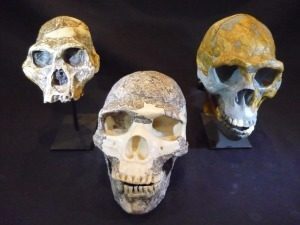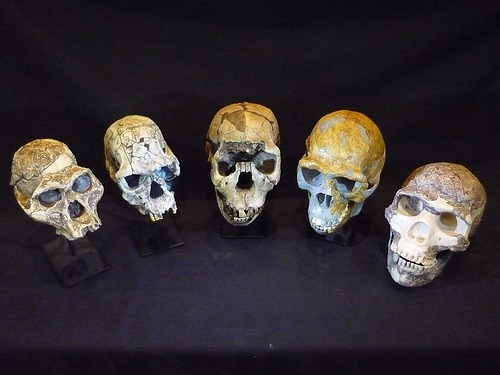
In a new research collaboration between Wits research entities – the Brain Function Research Group and Evolutionary Studies Institute – and the Cardiovascular Physiology team in the School of Biological Sciences at the University of Adelaide, previously held views on the evolutionary development of the human brain are being challenged.
The findings of their studies, published today in the Royal Society Open Science*, unseats previous theories that the progression of human intelligence is simply related to the increase in the size of the brain. The research team calculated how blood flowing to the brain of human ancestors changed over time, using the size of two holes at the base of the skull that allow arteries to pass to the brain. The findings, published in the Royal Society journal Open Science, thus allowed the researchers to track the increase in human intelligence across evolutionary time.
Their research found that while brain size has increased by about 350% over human evolution, blood flow to the brain increased by an amazing 600%. The increase in the supply of blood to the brain appears to be closely linked to the evolution of human intelligence where the human brain has evolved to become not only larger, but more energetically costly and blood thirsty than previously believed.
Wits Brain Function Research Group co-author Dr Edward Snelling says: “Ancient fossil skulls from Africa reveal holes where the arteries supplying the brain passed through. The size of these holes show how blood flow increased from 3 million year old Australopithecus to modern humans. The intensity of brain activity was, before now, believed to have been taken to the grave with our ancestors!”
“We believe this is possibly related to the brain’s need to satisfy increasingly energetic connections between nerve cells that allowed the evolution of complex thinking and learning,” said project leader Prof. Emeritus Roger Seymour of the University of Adelaide. “To allow our brain to be so intelligent, it must be constantly fed oxygen and nutrients from the blood. The more metabolically active the brain is, the more blood it requires, so the supply arteries are larger. The holes in fossil skulls are accurate gauges of arterial size.” Seymore suggests that the increasingly energetic connections between the nerve cells “allowed the evolution of complex thinking and learning.”
_______________________________________
These are skull casts from human evolution. Left to right: Australopithecus afarensis, Homo habilis, Homo ergaster, Homo erectus and Homo neanderthalensis. Credit: Roger Seymour. Casts photographed in the South Australian Museum.
______________________________________
Honors student and co-author Vanya Bosiocic had the opportunity to travel to South Africa and work with world renowned anthropologists on the oldest hominin skull collection, including the newly-discovered Homo naledi.
“Throughout evolution, the advance in our brain function appears to be related to the longer time it takes for us to grow out of childhood. It is also connected to family cooperation in hunting, defending territory and looking after our young,” Ms Bosiocic says.
“The emergence of these traits seems to nicely follow the increase in the brain’s need for blood and energy.”
Source: Adapted and edited from press releases of the University of the Witwatersrand and the University of Adelaide.
___________________________________________________
*The open-access paper citation: Seymour RS, Bosiocic V, Snelling EP. 2016. Fossil skulls reveal that blood flow rate to the brain increased faster than brain volume during human evolution. Royal Society Open Science 3: 160305. Release date: Aug 31, 2016.
Cover photo, top left: Hominin skull casts. Photo credit: Roger Seymour. Sourced from the South Australian Museum, Adelaide, Australia.
___________________________________________________

______________________________________________
Travel and learn with Far Horizons.
____________________________________________
This richly illustrated issue includes the following stories: Recent findings shedding new light on the whereabouts of the remains of Philip of Macedon, father of Alexander the Great; how an archaeologist-sculptor is bringing bones of the dead back to life; archaeologists uncovering town life at the dawn of civilization; an exclusive interview with internationally acclaimed archaeologist James M. Adovasio about what makes the Meadowcroft Rockshelter prominent in the ongoing search for the first Americans; what archaeologists are finding at the site of the ancient city of Gath, the home town of the biblical Philistine giant, Goliath; and how scientists are redrawing the picture of human evolution in Europe. Find it on Amazon.com.







